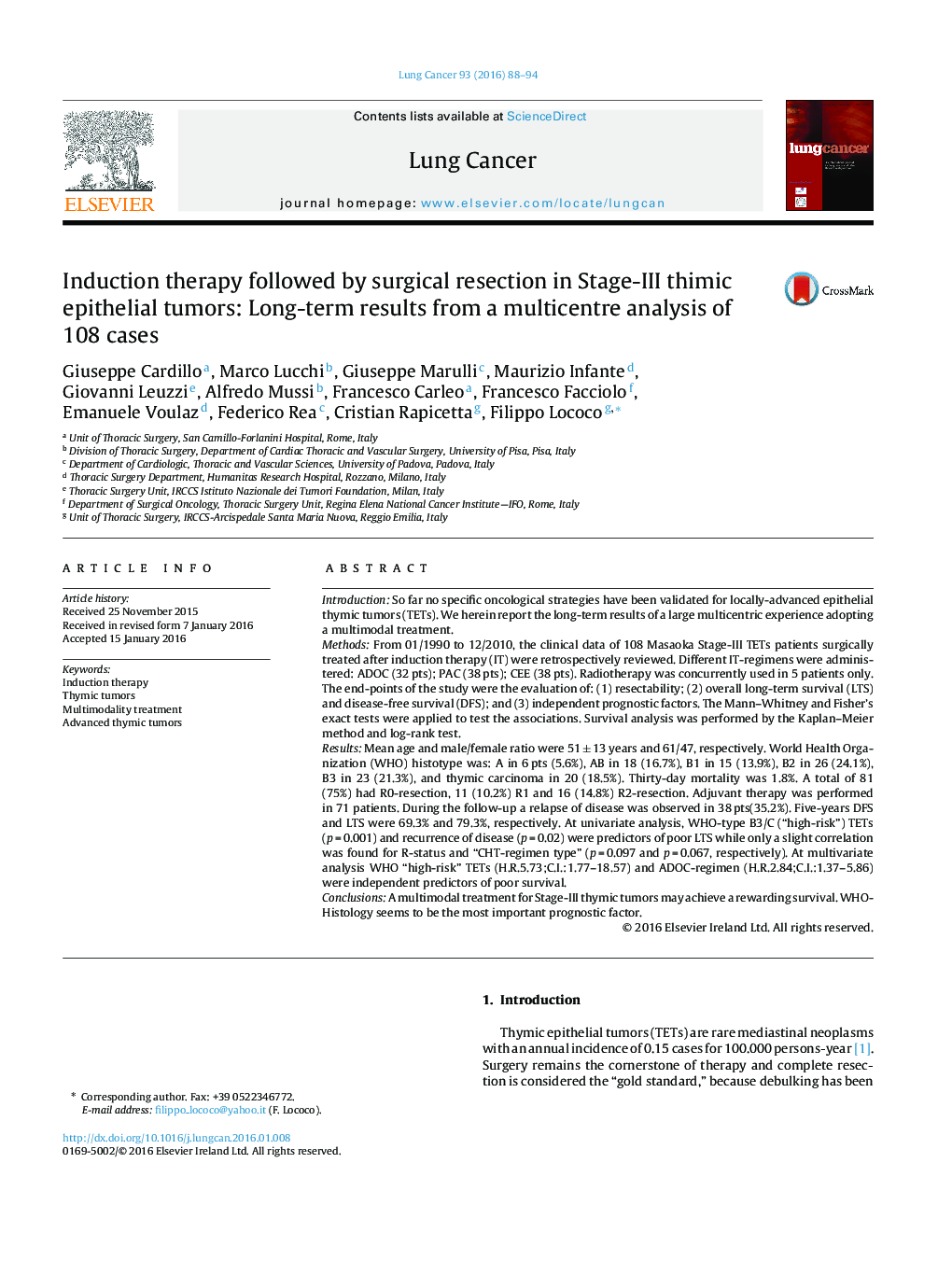| کد مقاله | کد نشریه | سال انتشار | مقاله انگلیسی | نسخه تمام متن |
|---|---|---|---|---|
| 2140447 | 1547974 | 2016 | 7 صفحه PDF | دانلود رایگان |

• No standard therapies have been validated for Stage-III epithelial thymic tumors.
• Surgical radicality and post-op outcomes are acceptable after multimodal treatment.
• A rewarding survival may be expected after induction therapy followed by surgery.
• WHO-Histology seems to be the most important prognostic factor.
IntroductionSo far no specific oncological strategies have been validated for locally-advanced epithelial thymic tumors (TETs). We herein report the long-term results of a large multicentric experience adopting a multimodal treatment.MethodsFrom 01/1990 to 12/2010, the clinical data of 108 Masaoka Stage-III TETs patients surgically treated after induction therapy (IT) were retrospectively reviewed. Different IT-regimens were administered: ADOC (32 pts); PAC (38 pts); CEE (38 pts). Radiotherapy was concurrently used in 5 patients only. The end-points of the study were the evaluation of: (1) resectability; (2) overall long-term survival (LTS) and disease-free survival (DFS); and (3) independent prognostic factors. The Mann–Whitney and Fisher’s exact tests were applied to test the associations. Survival analysis was performed by the Kaplan–Meier method and log-rank test.ResultsMean age and male/female ratio were 51 ± 13 years and 61/47, respectively. World Health Organization (WHO) histotype was: A in 6 pts (5.6%), AB in 18 (16.7%), B1 in 15 (13.9%), B2 in 26 (24.1%), B3 in 23 (21.3%), and thymic carcinoma in 20 (18.5%). Thirty-day mortality was 1.8%. A total of 81 (75%) had R0-resection, 11 (10.2%) R1 and 16 (14.8%) R2-resection. Adjuvant therapy was performed in 71 patients. During the follow-up a relapse of disease was observed in 38 pts(35.2%). Five-years DFS and LTS were 69.3% and 79.3%, respectively. At univariate analysis, WHO-type B3/C (“high-risk”) TETs (p = 0.001) and recurrence of disease (p = 0.02) were predictors of poor LTS while only a slight correlation was found for R-status and “CHT-regimen type” (p = 0.097 and p = 0.067, respectively). At multivariate analysis WHO “high-risk” TETs (H.R.5.73;C.I.:1.77–18.57) and ADOC-regimen (H.R.2.84;C.I.:1.37–5.86) were independent predictors of poor survival.ConclusionsA multimodal treatment for Stage-III thymic tumors may achieve a rewarding survival. WHO-Histology seems to be the most important prognostic factor.
Journal: Lung Cancer - Volume 93, March 2016, Pages 88–94